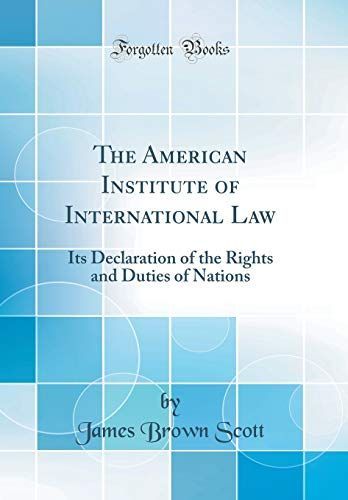
The American Institute of International Law Its Declaration of the Rights and Duties of Nations (Classic Reprint)
Excerpt from The American Institute of International Law: Its Declaration of the Rights and Duties of Nations The American Institute of International Law, which met at Washington in connection with and under the auspices of the Second Pan American Scientific Congress, adopted on January 6, 1916, a Declaration of the Rights and Duties of Nations. The Declaration differs from other projects of a like kind in that it is not based solely, or indeed at all, upon philosophic principles, but is based exclusively upon decisions of the Supreme Court of the United States. It is therefore fair to say that the principles of the Declaration are, as far as the United States is concerned, the law of the land, and an examination of the practice of the other American countries shows that these principles obtain in each of the American Republics, so that the Declaration is in reality a statement of the fundamental principles of international law, as they are understood in the New World. At the tenth annual meeting of the American Society of International Law, held in Washington, D. C., on April 26, 1916, the Honorable Elihu Root, President of the Society, de voted his opening address to a consideration of the Declara tion, its principles, and their importance.* During the session of the American Institute, the under signed, who happens to be its President, delivered a series of addresses dealing largely with the ideas contained in the pre amble of the Declaration, without which it is incomplete. It has been thought advisable to print the series of addresses, just referred to, in connected form, as an introduction to the Declaration, and to follow it with the official commentary, which the Institute adopted at one and the same time with the text of the Declaration. About the Publisher Forgotten Books publishes hundreds of thousands of rare and classic books. Find more at www.forgottenbooks.com This book is a reproduction of an important historical work. Forgotten Books uses state-of-the-art technology to digitally reconstruct the work, preserving the original format whilst repairing imperfections present in the aged copy. In rare cases, an imperfection in the original, such as a blemish or missing page, may be replicated in our edition. We do, however, repair the vast majority of imperfections successfully; any imperfections that remain are intentionally left to preserve the state of such historical works.